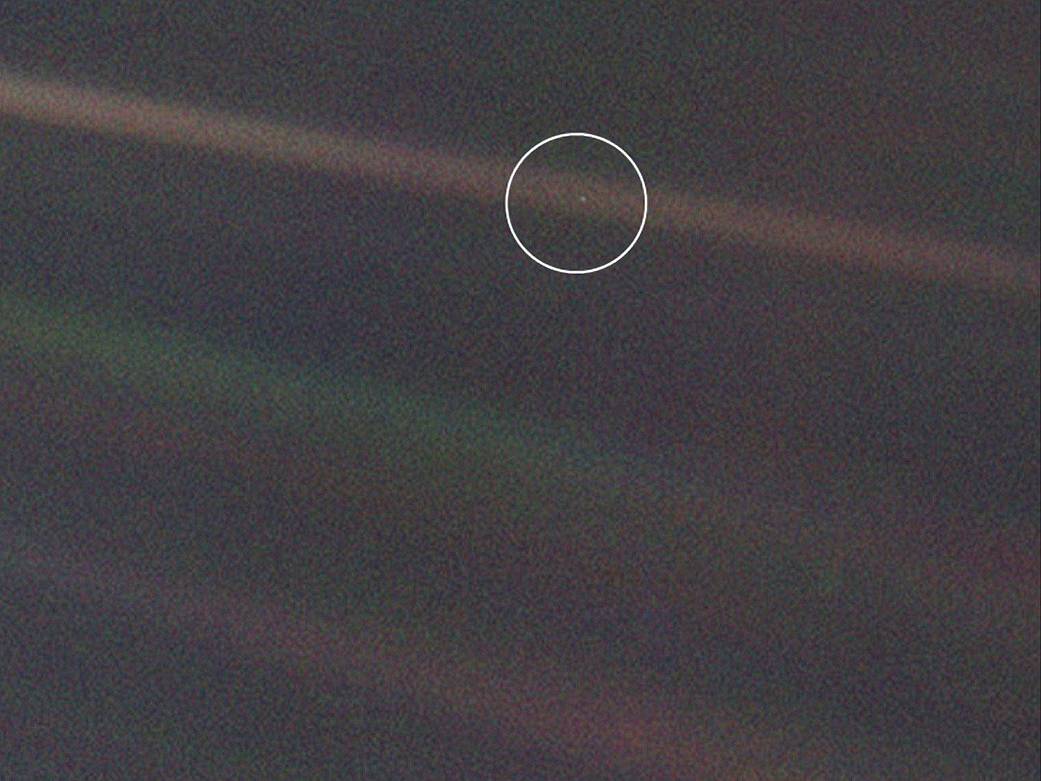-
Beyond the Galileo Experiment
July 18, 2019 / Written by: Glorie Martinez
Solar System Portrait - Earth as 'Pale Blue Dot'. Image credit: NASA/JPL-CaltechIn December 1990, the Galileo spacecraft completed its closest approach of our planet. This fly-by mission, led by astronomer Carl Sagan, offered researchers an unprecedented opportunity to study the hallmarks of life on Earth from space along the way to Jupiter.
Only a few months before the Galileo experiment, Sagan had taken advantage of another remarkable opportunity while working on the Voyager 1 mission. As the interstellar probe reached the fringes of our solar system, Sagan suggested engineers turn its camera around to catch one last glimpse of its home planet. This evocative image of Earth, captured from a distance of roughly 4 billion miles, came to be known as the Pale Blue Dot.
Sagan introduced the Pale Blue Dot to the public in 1994, contemplating its meaning in a now-famous speech that simultaneously highlights the cosmic insignificance of our planet and the strength of the human spirit. The Pale Blue Dot encouraged humanity to look both inward and outward, and consider our place in the Universe from a cosmic perspective. In his later work on the Galileo spacecraft, Sagan provided a scientific roadmap to embark on that philosophical journey.
In a recent article for Nature Astronomy, Dr. Nathalie A. Cabrol, Director of the SETI Institute’s Carl Sagan Center for Research, reflects on the lasting impact of Sagan’s contribution to the Galileo mission. Nearly 30 years after its publication, A search for life on Earth from the Galileo spacecraft by Sagan et al. (1993) establishes a foundation for the present and future of biosignature detection in our Solar System and beyond.
Source: [Nature Astronomy]
- The NASA Astrobiology Institute Concludes Its 20-year Tenure
- Global Geomorphologic Map of Titan
- Molecular Cousins Discovered on Titan
- Interdisciplinary Consortia for Astrobiology Research (ICAR)
- The NASA Astrobiology Science Forum Talks Now on YouTube
- The NASA Astrobiology Science Forum: The Origin, Evolution, Distribution and Future of Astrobiology
- Alternative Earths
- Drilling for Rock-Powered Life
- Imagining a Living Universe
- Workshops Without Walls: Astrovirology